
Franz Weidenreich (1873-1948).
“Giant early man from Java and south China.”
New York: American Museum of Natural History, 1945.
Anthropological papers of the American Museum of Natural History, volume 40, part 1.
Original wrappers, 134 pp., 12 plates on six leaves with additional illustrations in text.
$185.00.
This copy is inscribed on the front cover in black ink, undated, from the author to the Dutch paleontologist Dirk Erdbrink.
Franz Weidenreich was one of the most important anthropologists in the first half
of the twentieth century, attempting to make sense out of many important
discoveries in China and elsewhere in Asia. As Weidenreich’s notes in his
introduction (p. 13): “It is one of the greatest ironies in the history
of paleoanthropology that the most surprising and revolutionary discoveries which
shed real light on the origin of man should come from the periphery of the Old World.”
William White Howells (1908–2005), in his review of this memoir in the pages of American Journal of Physical Anthropology, remarked that: “The literature on recent discoveries of human fossils is being turned out almost exclusively by Doctor Weidenreich, and his industry is everyone’s good fortune. ... Readers may recoil from accepting as a direct ancestor every new hominid found in Asia, no matter how top-heavy, and will ask to see more definite indications than can be found in three teeth that such giants were not a special line. Irreversibility of evolution may not be sacrosanct, but the fact is that large mammal types of the Pleistocene generally became extinct, and did not father their living relatives. Doctor Weidenreich’s predilection is for putting all fossil human beings into our direct line (or else to junk them, like Eoanthropus [a.k.a., Piltdown Man]), but the chances are still as good for man as for other animals that his family has had sterile offshoots, particularly if these were giants. ... None of this, of course, is meant to discourage Doctor Weidenreich from his line of reasoning, or as anything but applause for adding again to the large body of original thought which has accompanied his writings.”
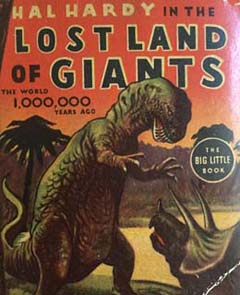
R.B. Winter.
Hal Hardy in the lost valley of the giants: The world 1,000,000 years ago.
Racine, Wis.: Whitman, 1938.
Big little books, number 1413.
$55.00.
Scarce; OCLC lists only four copies in U.S. libraries. Imagine a combination of Sir Arthur Conan Doyle’s (1859–1930) Lost world (1912) with Roy Mackal’s A living dinosaur? In search of Mokele-mbembe (1987), all reduced to a simply worded and decorated adventure. Here is an excerpt of text (pp. 72, 74):
“Whatever it was, it certainly did not act like an ordinary bird,
nor did it look like one, as Hal could see when, with a clatter of wings,
it roosted on a rock some little distance away.
Professor Grayson was dancing up and down with eagerness.
“A Pteranodon!” he cried. “A true herald of the forgotten world!”
“Come again?” asked Bob.
The Professor laughed.
“You’ll have to get used to some queer names,” he explained. “This is a Pteranodon —” which the the Professor pronounced ter-an-o-don” — and is a species of Pterodactyl!” (ter-a-dak-til).”
This riveting text is thankfully broken up by illustrations on every odd page, except for the opening page of text at p. 5, with a black-and-white figure on p. 4. You’ll find every possible prehistoric creature in this book, from giant cockroaches (Blattoptera) to ichthyosaurs to Triceratops to woolly mammoths.
The color cover is intact, with wear along its edges; text block yellowed with age as to be expected. Altogether 292 pp. in length, with ads at the end.

I.D. (Irving Day) Scott (1877–1955).
Inland lakes of Michigan.
Lansing, Mich.: Wynkoop Hallenbeck Crawford, State printers, 1921.
Michigan Geological and Biological Survey, Publication, number 30; Geological series, number 25.
Original cloth, 383 pp., with 20 plates scattered in text as well as maps (some folded).
$150.00.
The state of Michigan is best known as the Great Lakes State, given that it is surrounded to the east, north, and west by some of the largest fresh-water bodies of water in the world. But Michigan could be easily called simply the Lake State. According to the Michigan Department of Natural Resources, there are over 46,000 lakes in the state, covering over 890,000 acres. This work is the first and most comprehensive analysis of those thousands of delightful spaces, written in quite an accessible style.
This particular copy was once part of the professional library of Hendrik Albertus Brouwer (1886–1973), a Dutch geologist and professor at Delft University of Technology and University of Amsterdam. Brouwer was an exchange professor at the University of Michigan in 1921 and 1922 and probably acquired this work then. Two stamps appear in this book, reading “Bibliotheek H.A. Brouwer” on the verso of the frontispiece and the title page. Additionally, there is an inscription from the author to Brouwer on the ffep. In ink, undated, it reads “To Professor H.A. Brouwer with the compliments of I.D. Scott.”

Hanzō Murakami.
The geology & mineral resources of South Manchuria.
Dairen: Geological Institute, South Manchuria Railway Company, 1926.
[i]–[iv], 25 pp., folded map in rear pocket (map in perfect condition, unfolded measuring approximately 50 x 40 cm., entitled “General geological map of South Manchuria,” in multiple colors).
$550.00.
Very scarce. Inscription by the author in ink on cover, undated, signed as “H. Murakami.” Murakami was Chief Geologist for the South Manchuria Railway Company. Stamp of “Bibliotheek H.A. Brouwer” on front cover, with additional stamp reading “Dr. H.A. Brouwer”. Hendrik Albertus Brouwer (1886–1973) was a Dutch geologist and professor at Delft University of Technology and University of Amsterdam. Not ex-library, with pencil annotations on front cover, discoloration along edges of printed cover.
The South Manchuria Railway Company was one of the most successful Japanese corporations in the 1920s and 1930s, generating enormous profits by taking advantage of the agricultural and mineral wealth of Manchuria. This particular report documents economically important geological resources in Manchuria, especially iron and coal. Not surprisingly, 13,339,973 metric tons (or 29,409,571,275 pounds) of coal were extracted in 1924 and 1925, along with 418,863 metric tons (or 923,434,845 pounds) of iron ore (details provided in this document on p. 16). Altogether, there are four parts to this précis de géologie — I. Geology of South Manchuria (pp. 1–8); II. Economic geology of South Manchuria (pp. 9–17); III. Stratigraphy of the coal-bearing formations in South Manchuria (pp. 18–22); and, IV. Crustal movements in South Manchuria (pp. 23–25).
The importance of the South Manchuria Railway Company — and especially the resources of Manchuria — was brought sharply into focus by the Mukden, or Manchurian, Incident of September 18, 1931. A minor explosion staged by the Japanese military near Shenyang (Mukden) provided an excuse for the invasion of Manchuria and the eventual creation of Manchukuo in 1932 under the control of Imperial Japan.
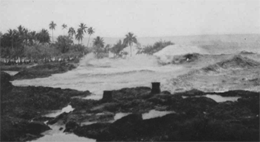
Francis P. Shepard (1897–1985), Gordon A. Macdonald (1911–1978), and Doak C. Cox (1917–2003).
The tsunami of April 1, 1946.
Berkeley: University of California Press, 1950.
Bulletin of the Scripps Institution of Oceanography of the University of California, La Jolla, volume 5, number 6, issued March 24, 1950.
[i]–[iv], pp. 391–527 [136 pp.], plates 6–33, 21 figures, 2 tables.
$255.00.
Inscription by the author in ink on upper right corner of cover, undated, reading “With regards from Francis Shepard.” Stamp of “Bibliotheek H.A. Brouwer” on front cover. Hendrik Albertus Brouwer (1886–1973) was a Dutch geologist and professor at Delft University of Technology and University of Amsterdam. Not ex-library, but pencil and ink annotations on front cover, with tear to top of spine.
Francis Parker Shepard literally invented modern marine geology with his dedicated field work and imaginative breakthroughs, inspiring generations of students. A graduate of Harvard and the University of Chicago, Francis was fortunate to be in a cottage on the north coast of Oahu, working on the manuscript of his textbook, Submarine geology when the tsunami struck. In his autobiography (September 1980), Shepard wrote:
“Early the next morning April 1, 1946, we were awakened by what sounded like hundreds of blowing off steam. We looked out to find the ocean had risen to the top of the beach ridge in front of the house and was spilling over into the cane field. ... I soon began to wonder if the first wave really was the highest, watching the build-up of water on the reef a few hundred feet out from shore. It got higher and higher and started to pour over the corals with a great breaker, moving rapidly toward us. Elizabeth [Francis’ wife] ran to get behind the house but I felt fairly confident that it would not get higher this time than the first, and stood my ground for a few more seconds and got a pretty good shot of the breaker as it topped the horizon. “Maybe I’m wrong,” I decided and raced back to join Elizabeth as the water swept over the place where I had been standing and smashed in the lanai of our house. We saw our refrigerator go sweeping past us and into the cane field. Looking toward the garage we saw our car was surrounded by water. Then, to our horror, we saw what had been the house next door to the right — all that remained was a mass of kindling.”
This publication provided one of the first detailed scientific descriptions of the mysterious tsunami of 1946, which, to this day, has not been completely explained.
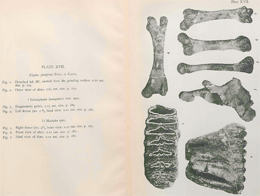
Franciscus Hendricus van der Maarel.
Contribution to the knowledge of the fossil mammalian fauna of Java.
’s-Gravenhage: Algemeene Landsdrukkerij, 1932.
Wetenschappelijke mededeelingen van de Dienst van den mijnbouw in Nederlandsch-Indië, number 15.
Not ex-library. Original boards, 208 pp., with 20 plates after text. Some foxing, with slight staining (with age) of cover.
$120.00.
Eugène Dubois (1858–1940) shook up the scientific world in 1891 with his discovery of Anthropopithecus erectus, a.k.a. Pithecanthropus erectus, now known as Homo erectus in Java (Indonesia). How old was Java Man? Henri Becquerel (1852–1908) had not yet discovered radioactivity, so Ernest Rutherford (1871–1937) had not applied notions of radioactive decay to dating samples of this planet. Dubois and his colleagues were dependent on the context of Java Man with other fossils, including the remains of many mammals. Franciscus Hendricus van der Maarel took advantage of large and well-preserved samples of a rich variety of mammals, described in this publication, to provide relative dates of Late Pliocene and Early Pleistocene to a number of localities.

PEOPLE, GET READY
The leaders of the National Democratic Party are planning to meet in Chicago in August {1]; there to enact, for the television audience, all the drama and excitement of an American Political Convention, culminating, it is understood, in the nomination of L. Johnson for President of the United States, and Leader of the Free World [2].
In the face if this act of sado-masochistic folly the free youth of America will simultaneously hold an enormous International Youth Festival in Chicago; there will be music playing and people swaying, dancing in the streets [3]. Johnson and his delegates, locked in their slaughterhouse conventionhall theatre [4], will make ugly speeches and play ugly campaign music, while we, the living breathing youth of the world, will make the city a theatre, and every restaurant Alice’s [5]. Already, throughout parks and vacant lots in and around Chicago, agents of the Potheads’ Benevolent Association have planted hundreds of thousands of pot seeds. The long hot summer of 1968 is expected to produce ideal weather for marijuana growing, and most of the crop should be ready for smoking by the end of August. Free people, free pot, free music, free theatre; a whole new culture will manifest itself to the world, rising from the ashes of America. Rock groups will be performing in the parks; newspapers will be printed in the streets; provos [6] and police will play cops and robbers in the department stores; Democrats and dope fiends will chase each other through hotel corridors. Longboats filled with Vikings will land on the shores of Lake Michigan [7], and discover America! Chicago will become a river of wild onions! [8]
YOUTH INTERNATIONAL PARTY [9]
CHICAGO, AUGUST 25–30, 1968
Yippee!
—My notes to explain the text of this flyer:
- The Chicago Democratic Convention took place 26–29 August 1968.
- Based on this text, this document was prepared before a televised speech by President Lyndon Johnson on 31 March 1968, in which he stated: “Accordingly, I shall not seek, and I will not accept, the nomination of my party for another term as your President.”
- Adopted from the lyrics of “Dancing in the streets” by Martha and the Vandellas. The original lyrics read: “There’ll be music everywhere. There’ll be swinging and swaying and records playing, Dancing in the street.” Released originally 31 July 1964.
- The 1968 Democratic Convention took place at the International Amphitheatre, located at 4220 South Halsted Street on the south side of Chicago, near the Union Stock Yards.
- Arlo Guthrie’s album “Alice’s Restaurant” was released in September 1967.
- Provocateur or political agitator.
- A replica of a Viking ship was built in Norway for the 1893 World’s Columbian Exposition in Chicago. A crew sailed it across the Atlantic, through the Great Lakes, making a triumphal arrival at the Fair on 12 July 1893. After the Columbian Exposition, the ship was on display at the Field Columbian Museum in Jackson Park and eventually moved to Lincoln Park. It now resides in a dry dock in a park in Geneva, Illinois.
- Chicago derives its name from a native American description of wild onions, chicagoua, or formally Allium tricoccum, a.k.a. ramp, wild leek or wild garlic.
- The Youth International Party held a press conference at the Americana Hotel in New York on 17 March 1968, in part discussing the upcoming Democratic Convention in Chicago.
In excellent condition, not ex-library, single sheet flyer, very scarce.
$200.
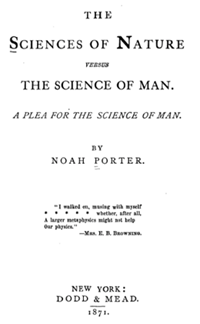
Noah Porter (1811–1892).
The science of nature versus the science of man.
New York: Dodd & Mead, 1871.
Noah Porter, President of Yale from 1871 to 1886, is best known as a philosopher and editor of Webster’s Dictionary in 1864, the first edition known as Unabridged. Some remember Porter for his attack on academic freedom in condemning William Graham Sumner (1840–1910) over his selection of Herbert Spencer’s Study of sociology as a textbook. Sumner eventually won that battle but one could have guessed it from a careful reading of this book. To quote Porter on pp. 90 and 91:
“This suggests the thought that the science of nature is not only related to the science of man because man interprets nature, but because man is part of nature, and nature cannot be truly and liberally interpreted unless man, in his higher capacities, is embraced within her plan and made the end of her agencies. That is a very narrow view of nature which only finds in nature physical agencies, and limits her resources to mechanics and chemistry, but discovers no place in her broad expanses or her generous provinces, for spirit or intelligence; accepting no man but protoplasm.”
Original brown cloth, author and title in gilt on front cover and spine, some rubbing to edges, with scratch on cover, brown end papers, 98 pp. in total, not ex-library.
$59.50.
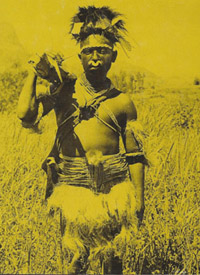
Robert J. Kroenke (1921-2016) and Lois Harriet Kroenke (1927-2014).
Letters from New Guinea.
New York: Vantage Press, 1976.
A graduate of Valparaiso University and Lutheran Deaconess in Milwaukee, Lois Kroenke was a missionary, with her husband Bob as carpenter, assistant, and factotum, in Papua New Guinea starting in October 1965 until March 1971. This book provides a glimpse into their experiences in a series of letters written to family and friends. These messages are quite entertaining and insightful:
“On our last morning in Brisbane, there were several events that reminded us how relaxed bush living is compared to life in a big city. While battling rush-hour traffic, to get to the air terminal, Bob managed to turn our rented car into the wrong lane of traffic. After the usual honked horns and dirty looks, he hastily corrected the situation. Bob is used to driving on the left in New Guinea but was momentarily confused in the rush traffic. Then a bit later, we were driving along into the morning sun when a pedestrian materialized out of nowhere. In Australia the pedestrian has the right-of-way in a crossover. With the sun in his eyes, Bob nearly mowed the man down. When we were at the airport, we wondered why our flight was not listed on the board. Upon inquiry we realized we were in the terminal that handles local flights and we belonged in the international terminal half a mile down the strip. Our flight to Port Moresby was without incident. Good thing, too, we could not have coped with many more small emergencies in one day.
In front of the Port Moresby terminal there stood a DC-3 in the broiling sun with one motor partly dismantled as the mechanics worked on it. We wondered whether if it was the plane for the next leg of our trip. About a half hour after the scheduled departure time, they called for us to board, and sure enough our fears were confirmed. The inside of the plane was stifling as it had stood in the tropical sun for hours. Without air conditioning or fans, we were soon saturated with sweat and were impatient to get back to our lovely Highland climate. When in flight, the plane first followed the coastline as we gained altitude. Then we turned inland and the clouds thickened quickly. We went above the clouds till we got over a steep mountain range with only tall thunderheads ahead. Suddenly the pilot took us down through a hole and now we followed a winding valley while the heavy clouds above obscured the mountain peaks. We commented that we hoped the pilot knew where he was going, as there did not seem to be much room for error here. About ten minutes later, we landed safely in Mount Hagen.“ (pp. 134–135)
Original dust jacket with front cover illustration of a Nete tribesman in traditional attire. First edition, as stated on verso of title page, not ex-library. Long inscription from the authors in black ink signed by the authors, dated September ’87. With photographic reproductions as illustrations throughout and map; 262 pp.
$15.

Maud Fuller Petersham (1890–1971) and Miska Petersham (1888–1960).
The story book of oil.
Chicago: John C. Winston, 1935.
Delightful, curious, humorous illustrations throughout this work, part of the Story Book series released between 1933 and 1939. How can you explain a tyrannosaurid strolling through an oil field for a cover illustration? From the opening text:
“Men have studied long to find out how this petroleum was formed. Here is the way that many of the most learned men think it was formed:
Hundreds of thousands of years before man was upon the earth queer-looking animals lived in the forests. In the seas were many strange kinds of fish and serpents. There were also countless millions of plants and animals too small to be seen.
As these plants and animals died, they lay buried in the mud. Ancient rivers, flowing through the forests into the oceans, deposited upon the bottom of the sea layer upon layer of the remains of plant and animal life.
Buried down under the salt water for ages, the mud and silt turned into rock, and the plant and animal remains became oil.”
Excellent condition for a book aimed at a younger audience, not ex-library. Illustrations fill most of the 32 pages of this work. It is not surprising that the Petersham team decorated more than 60 books in their careers.
$19.

David Wiesner.
June 29, 1999.
New York: Clarion Books, 1992.
Holly has a great idea for a science fair project — send her vegetable seedlings into the ionosphere to test the effects of radiation on their growth. Eventually, giant turnips settle in Montana; artichokes fall in Alaska; enormous broccoli drop in Holly’s backyard. What can be the most reasonable explanation? Warning — Occam’s razor does not apply to the ending! The perfect book for any science fair combatant — past, present, or future.
Signed by the author and illustrator on the title page. Complete number row on colophon. Dust jacket protected in plastic wraps.
with:
David Wiesner.
Sector 7.
New York: Clarion Books, 1999.
Always befriend a cloud on your trip to the top of the Empire State Building. You too will see clouds shaped like fish and octopi!
Signed by the author and illustrator on the title page, dated 2000, with a drawing of a cloud. Complete number row on colophon.
Both books: $150.00.
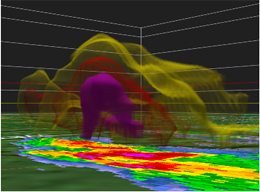
Tetsuya Theodore “Ted” Fujita (1920–1998).
The downburst: Microburst and macroburst.
Chicago: Satellite and Mesometeorology Research Project, Department of the Geophysical Sciences, University of Chicago, 1985.
$125.00.
Original cloth as issued, not ex-library. Signed on front blank page by Dr. Fujita and dated April 12, 1985. Scarce.
Ted Fujita was one of the most remarkable meteorologists in a remarkable Department of Meteorology at the University of Chicago. Meteorology emerged as a separate academic department in 1942 at the University, thanks to the efforts of Carl-Gustaf Rossby (1898–1957), Horace R. Byers (1906–1998), and others. Byers recognized the significance of Fujita’s research in Japan on downdrafts, recruiting Fujita to join the Department of Meteorology at Chicago in 1953. The Department of Meteorology merged with the Department of Geology at the University in 1961 to create the Department of the Geophysical Sciences. Dr. Fujita’s research at the University was important at many levels to both the public at large and meteorologists around the world. His efforts led to a better understanding of downdrafts, microbursts, and tornadoes. His development of a tornado damage scale in 1971, now known as the Fujita Scale, led to improved assessments of the consequences of powerful storms.
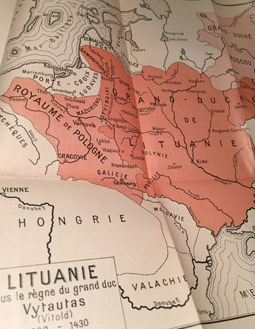
Antoine Viscont (Antanas Viskantas, 1875–1940).
La lithuanie religieuse.
Paris: Crès, 1918.
$150.00.
Original wrappers, 350 pp., some gatherings uncut, light foxing, not ex-library. OCLC records only two copies on two separate records with no reported holdings in U.S. Spine darkened. Beautiful color map folded inside rear cover, illustrating the extent of the Kingdom of Lithuania under the rule of Vytautas (1392–1430).
Antanas Viskantas, a priest, was active in Switzerland during World War I in a series of conferences to secure Lithuania independence after the end of hostilities.
G.H.R. von Koenigswald (1902–1982).
Beitrag zur Kenntnis der fossilen Wirbeltiere Javas.
Wetenschappelijke Mededeelingen, number 23.
Batavia: Landsdrukkerij, 1933.
$975.00.
Not ex-library. “1. Teil.” printed on cover and title page, but no further volumes were published. Original wrappers, 184 pages and 28 plates, some of which are folded. OCLC records only four copies in U.S. libraries, obviously very scarce.
Ralph von Koenigswald was one of the most important paleontologists in Asia in the twentieth century, with his most significant discoveries made in Java in the 1930s. This important work describes some of the mammals found at the Ngandong site, which also yielded Homo erectus. The significance of this paper was underscored in a 2010 study by O. Frank Huffman and colleagues, entitled “Provenience reassessment of the 1931–1933 Ngandong Homo erectus (Java), confirmation of the bone-bed origin reported by the discoverers,” and published in PaleoAnthropology.
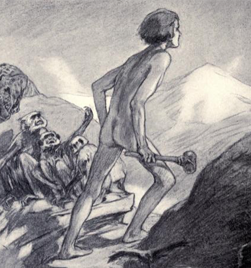
Henry Robert Knipe, F.L.S., F.G.S. (1855–1918).
Evolution in the past.
London: Herbert and Daniel, 1912.
$250.00.
Not ex-library, foxing on end papers. Warmly inscribed on the front blank page by the author in ink, undated: “To Gertrude Betts with kind wishes from the author H.R. Knipe”. Illustrations by Alice B. Woodward and Ernest Bucknall. Scarce.
“In the following pages I have endeavoured to give in non-technical language, and in some detail, an account of ancient life as now known and understood. The wider and increasing interest in the subject is, no doubt, in part owing to many recent discoveries of important fossil remains. The whole subject, however, became invested with a new interest as soon as it came to be recognised that all modern life has been evolved, step by step, from the life of the past. The material for bringing ancient life into view is, it must be admitted, still sadly deficient. Much — and of the highest value — has been lost; but, thanks to the labours of hosts of workers, much has been recovered. Thousands and thousands of extinct species of life-forms are now recorded; and had these not been described and classified, the student might well have been bewildered at their multiplicity.” — Preface, p. [vii].

Elisa Davenport.
Kitchen Turkish: A few words and phrases to help clarify pantry pantomine [sic].
Istanbul: American Women’s Club of Istanbul, 1956.
$350.00.
Gray wrappers staple-bound, with age coloring around edges of cover, altogether 14 pages. Not in OCLC; not ex-library, scarce ephemera.
“Americans arriving in Turkey are usually advised to employ a Turkish maid who has been previously trained by Americans, and who may speak a little English. This impractical and rather cowardly approach to the problem implies that it is easier for your maid to learn English than it is for you to master a few words of Turkish. So if it is only the language barrier that bothers you, ‘Buyurun’! (Here you are.)
‘Kitchen Turkish’ is designed to help you to ask for what you want, and to tell your maid what you want her to do. (The interesting part of this game is the element of surprise in the result.) Any resemblance between this means of communication and the Turkish language is purely coincidental. It is recommended that it be used with liberal and elaborate gestures: delivered with sweeping, dusting and ironing motions and softened with a smile.” p. 1 of Kitchen Turkish.
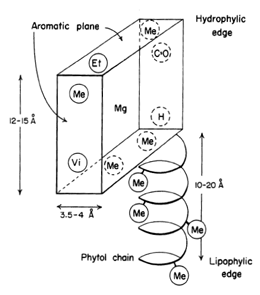
Melvin Calvin (1911–1997).
“From microstructure to macrostructure and function in the photochemical apparatus,” pp, 160–180.
In: The photochemical apparatus, its structure and function: Report of symposium held June 16–18, 1958.
Upton, N.Y.: Biology Department, Brookhaven National Laboratory, 1959.
Brookhaven symposia in biology, number 11.
$250.00.
Not ex-library. Signature of previous owner on cover. Entire work offered here. One of 4,000 copies, issued on April 1959, as stated on verso of title page.
“When the symposium was described to me some months ago and it was suggested that I might participate in it on any subject that I chose, I selected the ambitious title above. I felt that we really should know something about the microstructure and function of the photosynthetic apparatus. In fact, I still think we should and wish we did so that I could tell you about it!” — Melvin Calvin, p. 160.
On pages vi–vii, you will find reproductions of photographs taken during the symposium. Unfortunately they are not captioned, so the identities of many participants are unknown, at least to me. I particularly enjoy one image of three individuals around a small table in intense discussion; the table is covered with 14 empty coffee cups! Java in the service of science, indeed.
Melvin Calvin’s paper in this volume appeared originally as an internal report from the University of California Radiation Laboratory, dated October 22, 1958, identified as UCRL–8411. A casual browser might uncover in the Radiation Lab’s reports a document identified as UCRL–8414, dated a week later, October 29, 1958. Also written by Melvin Calvin, it is entitled “Round trip from space” on the extraterrestrial origins of life on Earth. Fascinating, as Mr. Spock might declaim to Captain Kirk. A careful reader will note that Calvin recycled some of his figures from “From microstructure to macrostructure and function in the photochemical apparatus” into “Round trip from space.” This reuse of illustrations, nor the notion of life from outer space, obviously did not hinder the Royal Swedish Academy of Sciences’s decision to award the 1961 Nobel Prize in Chemistry to Dr. Calvin for “for his research on the carbon dioxide assimilation in plants.”

Stephen Jay Gould (1941–2002).
“Land snail communities and Pleistocene climates in Bermuda: A multivariate analysis of microgastropod diversity,”
Proceedings of the North American Paleontological Convention, Part E, pp. 486–521.
Lawrence, Kansas: Allen Press, 1970.
Inscribed by Gould on the cover, in blue ink, undated.
with:
Stephen Jay Gould (1941–2002).
“An evolutionary microcosm: Pleistocene and recent history of the land snail P. (Poecilozonites) in Bermuda,”
Bulletin of the Museum of Comparative Zoology (Harvard University), volume 138, number 7 (December 26, 1969), pp. 407–531.
with:
Niles Eldredge and Stephen Jay Gould (1941–2002).
“Punctuated equilibria: Am alternative to phyletic gradualism,” pp. 82–115,
In: Thomas J.M. Schopf (editor). Models in paleobiology. San Francisco: Freeman, Cooper & Company, 1972. 250 pp.
Entire volume offered; beautifully rebound in quarter leather and marbled boards, title (Models in paleobiology all is caps) in gilt on spine, with bound bookmark, and double blue endpapers.
with:
Elisabeth Vrba and Niles Eldredge (editors).
Macroevolution: Diversity, disparity, contingency: Essays in honor of Stephen Jay Gould.
Lawrence, Kansas: Paleontological Society, 2005.
Supplement to Paleobiology, volume 31, number 2, 210 pp.
$4,500.00.
The Bermudas were Stephen Jay Gould’s equivalent of Charles Darwin’s Galápagos Islands. For Darwin, it was a dozen species of Galápagos finches. For Gould, 12 species of microscopic Bermudan snails. To me, Gould’s work on the snails of Bermudas is worth a gross of Bully for Brontosaurus, Gould’s popular tome accumulated from his column in the pages of Natural History. I must admit to a great deal of subjectivity about the Phylum Mollusca, especially the Class Gastropoda.
Gould’s presentation at the amazing first North American Paleontological Convention in September 1969 solidified his reputation as one of the most important paleontologists of his generation. His eloquent style made his work accessible to fellow professionals as well as countless fans of trilobites, dinosaurs, and other extinct fauna. “Punctuated equilibria” in Models in paleobiology elevated Gould into the stratosphere among many of his paleontological colleagues.
This offering of Gould’s most significant paleontological work, with the Paleontological Society’s 2005 gedenkschrift, is especially unique. Signed scientific works by Gould are extremely scarce, much like uncovering Archaeopteryx in a Bavarian quarry or Metaspriggina on Mount Stephen. All of these are in excellent condition, and naturally are not ex-library.
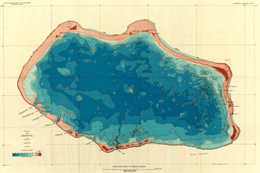
Kenneth O. Emery, Joshua I. Tracey, Jr., and Harry S. Ladd.
Geology of Bikini and nearby atolls.
Washington, D.C. : U.S. Government Printing Office, 1954.
$115.00.
Not ex-library. Not print on demand. U.S. Geological Survey, Professional Paper, number 260-A. Foreword by Roger Revelle. Issued in box with 265 pp. of text bound with 64 plates; Folded charts 1–11, folded plates 65–73 separate from text volume.
“Of all earth’s phenomena, coral reefs seem best calculated to excite a sense of wonder. And of all the forms of coral reefs, the atolls have appeared to men of science to be richest in mystery and most strange. Rising alone from the empty sea, these ancient structures, growing now slowly, now fast, toppling when the sea retreats and flung up in haste when sea level rises, are like a Gothic cathedral, ever building yet never finished, infinite in detail yet simple and massive in plan. Tiny plants and animals are their builders. Their architects are the giant ocean and the restless wind. ... In 1946, few American or European scientists had heard the name of Bikini Atoll. From 1946 to 1952, Bikini Atoll was studied intensively, from many different points of view and with modern tools of exploration, so that it has become perhaps the most thoroughly known atoll on earth. The papers included in this volume summarize and interpret this knowledge. Planning for the scientific work on which this report is based began in the fall of 1945, shortly after it was decided to conduct tests of nuclear-fission weapons at Bikini Atoll. This decision had been made from rather little information, for Bikini, unlike neighboring Eniwetok and Kwajalein Atolls, had not been the scene of any major military activities in World War II. An accurate hydrographic chart of the lagoon and surrounding waters was needed for the safety of the many ships to be employed in the operation. Channels and anchorage areas had to be located and shore facilities established. Moreover, in order to gain a maximum of technical value from the weapons tests, a thorough understanding of the physical and biological environment of the proving ground was desirable. This was true particularly because the nuclear-fission explosions involved energy releases more comparable to those, of large-scale geophysical phenomena than any previous man-made event. Likewise, the intensity of the nuclear radiation to be released was enormous, far greater than living organisms had ever experienced prior to 1945.” — Roger Revelle, foreword, p. iii.

Vaughan Cornish (1862–1948).
Waves of the sea and other water waves.
Chicago: Open Court, 1910.
$95.00.
Not ex-library. Stamp of previous owner on inside front cover and on inside rear cover. Frontispiece and tissue guard loose at title page.
“In 1895 I went to live on the South Coast, and every day the waves of the sea — beautiful, mysterious, and insistent — drew me more and more to the path on the cliff whence I could watch them curl and break, and listen to their splash upon the sandy shore. I stood there on the afternoon of a calm day in early autumn at the time of low water of a spring tide. The little waves, gliding slowly in over the flat sands, bent round the ends of a shoal, as waves of light are refracted, and, meeting, passed through each other, each to con tinue its own course. Elsewhere a long, low wave, impinging obliquely on a small bank of sand, was thrown backwards at an angle of reflection equal to that at which it had struck the obstacle. And as I watched I thought what a fine thing it would be if the study of all kinds of waves could be coordinated.” — Vaughan Cornish, “Preface” of Waves of the sea and other water waves, p.9.
Andrew Goudie wrote about Vaughan Cornish and this book in the Transactions of the Institute of British Geographers in 1972: “Apart from his study of desert dunes, Cornish’s main contributions in kumatology were in the measurement of ocean waves and his descriptions of coastal features. On his many long ocean voyages Cornish used his own observations, and those of ships’ masters, to assess the maximum sizes of ocean waves (he showed many previous reports to have been grossly exaggerated) and to relate these to wind velocity measurements. These findings are reported at length in Waves of the sea and other water waves (1910).”
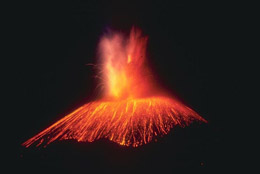
Kenneth Segerstrom (1909–1992), Howel Williams (1898–1980), Ray E. Wilcox (1912–2012), William F. Foshag (1894–1956), and Jenaro González R.
Geologic investigations in the Parícutin area, Mexico.
Washington, D.C.: U.S. Government Printing Office, 1956.
$99.75.
Surely not ex-library, near fine. Released as U.S. Geological Survey Bulletin, number 965. In four parts: (A) Erosion studies at Parícutin, State of Michoacan, Mexico, by Kenneth Segerstrom; (B) Volcanoes of the Parícutin region, Mexico, by Howel Williams; (C) Petrology of Parícutin volcano, Mexico, by Ray E. Wilcox; and, (D) Birth and development of Parícutin volcano, Mexico, by William F. Foshag and Jenaro Gonzalez R.
One of the most studied volcanoes, the Parícutin Volcano first appeared on February 20, 1943 in a cornfield. It grew to an eventual height greater than 400 meters over a nine-year period, becoming an inspiration to artists, a star in movies and newsreels, and a rich resource to geologists and especially volcanologists. Parícutin directly affected the careers of many a scientist drawn to its slopes. Alexander R. McBirney, in his 1991 National Academy of Sciences memoir of Howel Williams, wrote: “It is not an exaggeration to say that Howel Williams, through his own work and that of his students, was largely responsible for the emergence of volcanology as a rigorous branch of modern science. Few have left so pervasive an imprint on their fields; even fewer have inspired wider admiration or deeper affection. ... When the volcano Parícutin was born in a Mexican cornfield, he joined a group of geologists recording its growth and evolution and completed a reconnaissance study of more than a hundred small cinder cones in the surrounding region.” Daniel E. Kile, in his memorial to Ray E. Wilcox in the pages of American Mineralogist in 2013, noted that: “Ray was the first [U.S. Geological] Survey scientist to conduct long-term observations of Parícutin Volcano in Mexico ... where he spent two years as the ‘resident observer’, with his wife and young son near the remote village of Angahuan. Conditions were primitive by modern standards, e.g., there was no running water or electricity, and a gasoline camp stove was employed for daily cooking. Here, he was responsible for monitoring seismic and explosive activity, and sampling tephra and lava. An example of Ray’s patience and generosity is evidenced when he noticed that a local helper who assisted in daily recordation of volcanic events, Celedonio Gutiérrez, was having difficulty with time management; Ray realized that Celadonio, like many locals, had never been taught to read time, whereupon Ray bought him a watch and showed him how to use it. A level of adaptability was required on the job; when surveying posts were absconded by the local villagers, Ray determined that if a cross-beam was set (to assume the form of a cross), the highly religious residents would leave them in place — a strategy that proved effective. A series of publications on the growth and evolution of the erupting volcano ensued, culminating in a significant report published in U.S. Geological Survey Bulletin 965-C that constituted a classic study of the variation in magma during an eruption cycle; this work significantly advanced scientific understanding of volcanic processes.’
Bernard Greenberg.
Flies and disease.
Princeton, N.J.: Princeton University Press, 1971–73.
$350.00.
Not ex-library. Spines of dust jackets sunned. Two volumes, with volume 1: Ecology, classification, and biotic associations; volume 2: Biology and disease transmission. Inscribed by the author on the blank page before the half-title page of volume 1.
“Living with us in our homes, feeding off our tables, we have an insect whose befouled body may at any time be bearing micro-organisms of dangerous nature. It does not seem so long ago since we were being taught to regard this insect as a very respectable member of our household. Tempora mutantur. No longer will children be taught that it is wrong to kill a fly but the first step to be taken by one who would seek to mould himself after the pattern of St. George.” — C.G. Hewitt. House-flies and how they spread disease. Cambridge: Cambridge University Press, 1914, p. 2.
Guy Thomas Buswell (1891–1994) and Lenore John.
The vocabulary of arithmetic.
Chicago: University of Chicago, 1931.
$195.00.
Not ex-library. Signed by Lenore John on ffep. Supplementary Educational Monographs, published in conjunction with the School Review and the Elementary School Journal, number 38.
Guy Thomas Buswell was one of the most significant educational psychologists in the twentieth century, completing a great deal of important research over three decades at the University of Chicago. He is best remembered for his How people look at pictures: A study of the psychology of perception in art (University of Chicago Press, 1935). In this particular work, Buswell and Lenore John, mathematics teacher at the University of Chicago Laboratory School, analyzed how students made sense of basic arithmetical functions. Buswell understood the incredible importance of arithmetic when he wrote in 1941: “There are in this country a large number of women who, when they find it necessary to triple a recipe, measure out two-thirds of a cup of flour three times rather than hazard the mental operation of ‘how much is three times two-thirds?’ Everyone knows persons who are afraid to display their lack of ability at addling scores in a card game and are much embarrassed by the fact that they are afraid to do so. Many otherwise intelligent citizens throw up their hands in surrender in the face of trying to understand the financial operations of even local government. Innumerable people are caught in the trap of installment buying because they do not know how to work out the simple arithmetic of the situation. Short-term loan agencies flourish on the patronage of people who never realize the exorbitant rates of interest they are paying until they are trapped by the impossibility of keeping pace with the rapidly accumulating size of their loans.”

Samuel Phillips.
Guide to the Crystal Palace and park.
London: Crystal Palace Library, 1855.
Fourth edition.
bound with:
Richard Owen.
Geology and inhabitants of the ancient world. The animals constructed by R.W. Hawkins.
London: Crystal Palace Library, 1854.
bound with:
The natural history department of the Crystal Palace described. Ethnology by Dr. R.G. Latham. Zoology and botany by Edward Forbes.
London: Crystal Palace Library, 1854.
$8,500.00.
Scarce work, providing in a single volume a guide to the Crystal Palace. Long inscription in ink on the ffep, indicating that this work was used on 3 July 1855. As with most guidebooks, it is worn with the front cover rubbed and stained. The spine is torn along the edge with the front cover. However, this work is definitely not an ex-library copy. Only one copy found on OCLC of this combination of volumes, with the fourth edition of Phillips’ Guide.
Most significant in this volume is Richard Owen’s (1804–1892) curious description of the paleontological elements of the park, the famous reconstructions created by Waterhouse Hawkins (1807–1894). The frontispiece features a map of the distribution of the creatures in park, although one wonders if the cartographer or Owen actually checked its accuracy.
Such delicious Victorian verbosity by Owen: “In every stage of this difficult, and by some it may be thought, perhaps, too bold, attempt to reproduce and present to human gaze and contemplation the forms of animal life that have successfully flourished during former geological phases of time, and have passed away long ages prior to the creation of man, the writer of the following brief notice of the nature and affinities of the animals so restored feels it a duty, as it is a high gratification to him, to testify to the intelligence, zeal, and peculiar artistic skill by which his ideas and suggestions have been realised and carried out by the talented director of the fossil department, Mr. Waterhouse Hawkins. Without the combination of science, art, and manual skill, happily contained in that gentleman, the present department of the Instructive Illustrations at the Crystal Palace could not have been realised.” — p. 7, Geology and inhabitants of the ancient world.
With the purchase of this work, a lagniappe! In this case, the enticement included at no extra charge is Barbara Kerley’s The dinosaurs of Waterhouse Hawkins (New York: Scholastic, 2001). Illustrations by Brian Selznick. “First edition, October 2001” as stated on verso of title page, and as proven by the lack of decorations on the dust jacket for the Caldecott Honor Book (2002).
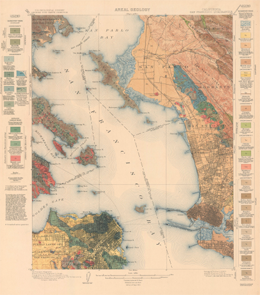
Andrew C. Lawson.
San Francisco folio, Tamalpais, San Fransciso, Concord, San Mateo, and Haywards quadrangles, California.
Washington, D.C.: U.S. Geological Survey, 1914.
Geologic atlas of the United States, folio number 193.
$190.00.
Includes 15 color maps, which are often lost for decorative whims. Twenty-four pages of text provide a context for the delightful maps; overall size 55 x 47 cm. Slight chipping at edges of covers. Institutional stamps on front cover. Scarce.
“The well-known susceptibility of the region about San Francisco Bay to earthquakes naturally raises the question how, in the light of geologic knowledge, loss of life and property due to violent shocks may be guarded against or minimized. In considering this question it should be noted, first, that more than 99 per cent of the earthquakes that affect the region are harmless. They are tremors of the earth’s crust due to the adjustments of minor stresses in the rocks far below the surface. In regions where such tremors are frequent, however, as in the region about San Francisco Bay, violent and destructive shocks occur also, though at comparatively long intervals, and it is to these greater shocks, of course, that attention is particularly directed.” — p. 23 under the section “Earthquakes and construction” in the San Francisco folio.

Eugene Allen Smith (1841–1927).
Geological survey of Alabama: Report of progress for 1875.
Montgomery, Ala.: W.W. Screws, state printer, 1876.
Includes: “Partial list of coal plants,” by Leo Lesquereux (1806–1889), pp. 75–78.
bound with:
Eugene Allen Smith (1841–1927).
Geological survey of Alabama: Report of progress for 1876.
Montgomery, Ala.: W.W. Screws, state printer, 1876.
Includes: “Fauna of Alabama: Fresh water and land shells” by James Lewis, pp. 63–100.
$75.50.
Eugene Allen Smith was instrumental in the recovery of Alabama after the Civil War. He singlehandedly worked to discovery the state’s natural resources in coal and iron, which led to the steel industry’s enormous growth in Birmingham. Smith as State Geologist (without a salary from the State Legislature) spent his summers away from the University of Alabama describing the economically most significant deposits. These two reports provide a measure of Smith’s success in alerting Alabama to its mineral wealth.
This volume is not ex-library; the spine is worn and torn along the bottom edge. The text block has separated from the binding. Two black-and-white maps at the end of the text were trimmed too enthusiastically. One map illustrates a portion of the Coosa Coal Field; the second map provides an outline of the state, “showing the principal streams and the relative position of the counties.” Stamp of previous owner (V.F. Marsters, Professor of Geology at Indiana University over a century ago) on title page of Geological survey of Alabama: Report of progress for 1876 as well as on top of p. 97. Light foxing throughout.
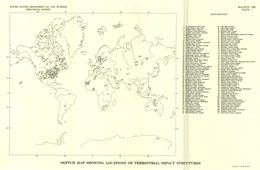
Jacquelyn H. Freeberg.
Terrestrial impact structures: A bibliography.
Washington, D.C.: U.S. Government Printing Office, 1966.
U.S. Geological Survey, bulletin number 1220.
$26.00.
Definitely not ex-library. U.S. Includes Plate 1 folded in rear pocket, “Sketch map showing locations of terrestrial impact structures.”
One of the structures briefly described in this work is the Des Plaines Disturbance. Located near Chicago O’Hare airport, this impact structure caused by a meteorite would be quite a visual delight for aerial passengers, measuring over five miles in diameter. Unfortunately, it is buried beneath at least 75 feet of overburden.
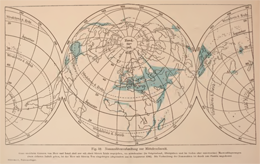
Ernst Stromer von Reichenbach (1871–1952).
Lehrbuch der paläozoologie.
Leipzig: B.G. Teubner, 1909–1912.
Two volumes: I. Wirbellose tiere; II. Wirbeltiere.
$175.00.
Ernst Stromer is best remembered today for his discovery in January 1911 of Spinosaurus in Egypt, its loss in 1944 in a bombing raid on Munich, and its eventual rediscovery at Stromer’s original Egyptian locality in 1999. For movie fans, Spinosaurus is commemorated in its battle with Tyrannosaurus rex in the film Jurassic III (2001). Stromer should be universally praised for this work, a foundational treatise for paleozoology, rather than movie star Spinosaurus. “Paleozoology” had appeared in the nineteenth century in French, Italian, German, and English (see the Oxford English Dictionary’s entry for “palaeozoology”). Stromer, Othenio Abel (1875–1946), and others transformed a bandied about term into a scientific discipline.
Lehrbuch der paläozoologie appeared in two volumes, offered here, not ex-library, with a neat signature of a previous owner on the title pages of both tomes. Erratum sheet loosely inserted at the title page of second volume. Great advertisements from the publisher on the end papers of both volumes. Well illustrated.
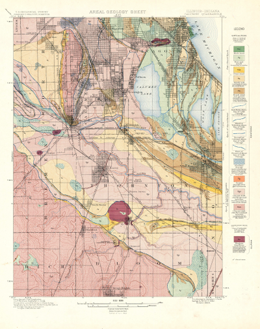
William C. Alden.
Chicago folio, Riverside, Chicago, Desplaines, and Calumet quadrangles. Illinois-Indiana.
Washington, D.C.: U.S. Geological Survey, 1902.
Geologic atlas of the United States, folio number 81.
$290.00.
Includes 12 color maps, 14 pages of text, with several leaves of plates, measuring 55 by 47 cm. Chipping at the edges of brittle covers. Institutional stamp on lower corner of p. [1] of text. Scarce, as this work is routinely guillotined for its beautiful maps.
I adore the geological maps in this folio with their rich colors, sparking my interest in local natural history. These maps guided me decades ago on fossil excursions to Silurian exposures, hunting for Orthoceras, Bumastus, and Pentamerus.
Yevgeny Yevtushenko (1933-).
Yevtushenko poems.
New York: E.P. Dutton, 1966.
$250.00.
First edition, as stated on verso of title page. Bilingual edition. Authorized translation by Herbert Marshall. Signed by the author on half title page. Loosely inserted between front cover and ffep a program at the Theresa L. Kaufman Concert Hall for a reading by Yevtushenko November 9 and 12, 1966, signed by Yevtushenko on cover. Additionally, loosely inserted another program for a reading December 19, 1966 at the Lincoln Center, also signed by Yevtushenko on cover. Absolutely not ex-library.
This work includes “Babi Yar”, Yevtushenko’s 1961 poem used by Dmitri Shostakovich (1906–1975) in the first movement of Shostakovich’s symphony number 13, opus 113. My favorite Shostakovich symphony for its sheer power, I collect recordings of number 13 in vinyl and CD. I’ve nearly worn out Kyrill Kondrashin’s (1914–1981) live recording from December 1962 in Moscow, with the Moscow Philharmonic and Vitaly Gromadsky as bass. While reading this book certainly listen to Yevtushenko read “Babi Yar” before a wonderful performance of number 13 on a great CD by the New York Philharmonic under the direction of Kurt Masur (1927–2015).
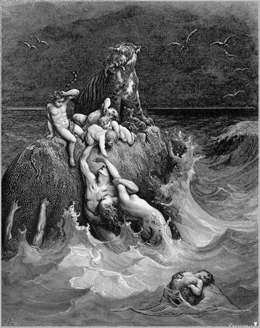
B.C. Sliggers (editor).
Highlights from the Teyler Museum: History, collections and buildings.
Haarlem: Teyler Museum, 1996.
$85.00.
An excellent guide to one of my favorite museums in the world. Where else can you see the remains of a human lost in the Deluge? Oh yes, that Deluge. Johann Jakob Scheuchzer (1672–1733) described what he thought was fossilized evidence of a diluvial human in his Homo diluvii testis published in 1726. Eventually, Georges Cuvier (1769–1832) made the correct anatomical call, noting that Homo diluvii testis was not a hominid. In due course, Scheuchzer’s prehistoric man was taxonomically transformed into an amphibian, now known among literati as Andrias scheuchzeri. This fabulous fossil is one of many treasures to justify a trip to Haarlem.
Tom Wolfe.
The electric kool-aid acid test.
New York: Farrar, Straus & Giroux, 1968.
$440.00.
In excellent condition, dust jacket not price clipped. Loosely inserted in front cover review clipped from New York Times, dated August 12, 1968; this clipping formerly inserted at title page, hence lightly staining t.p. Also inserted is a charge slip for the purchase of this from Kroch’s & Brentano’s on South Wabash Avenue in Chicago, dated August 12, 1968.
Kroch’s & Brentano’s was my favorite bookstore on South Wabash, ideally located a block north of Rose Records. I could pick up a delightfully obscure title at Kroch’s & Brentano’s like Harald Stümpke’s The Snouters: Form and life of the Rhinogrades (Garden City, N.Y.: Published for the American Museum of Natural History by the Natural History Press, 1967) and then head to Rose for the latest Shostakovich recordings on the Soviet Melodiya label. Ah, ancient history.

James D. Watson and Francis H. C. Crick (1916–2004).
“The structure of DNA”
In: Viruses: Cold Spring Harbor Symposia on Quantitative Biology, volume 18.
Cold Spring Harbor, N.Y.: The Biological Laboratory, 1953.
$15,000.00.
One of the most famous papers in twentieth century science, “A structure for deoxyribose nucleic acid” first appeared in print in Nature on 25 April 1953. Most librarians now hide volume 171 for 1953 of Nature in fears of pages 737 and 738 vanishing altogether. The 25 April issue contained two other special papers related to the discovery, “Molecular structure of deoxypentose nucleic acids” by Maurice Wilkins (1916–2004), Alex Stokes (1919–2003), and Herbert Wilson (1929–2008) (pp. 738–740), and “Molecular configuration in sodium thymonucleate” by Rosalind Franklin (1920–1958) and Raymond Gosling (1926–2015) (pp. 740–741). A little over a month later, Watson and Crick followed up on their understatement of the century near the end of the first announcement (“It has not escaped our notice that the specific pairing we have postulated immediately suggests a possible copying mechanism for the genetic material.”) in the 30 May 1953 issue of Nature with “Genetical implications of the structure of deoxyribonucleic acid” (pp. 964–967).
Cold Spring Harbor was an opportunity for an important scientific audience to meditate on the real significance of Watson and Crick’s discovery. As Watson noted: “I gave my report on the double helix halfway through the meeting. There was almost no reason to talk because most participants had already seen my foot-long demonstration model with the A-T and G-C base pairs colored red and green, respectively. Moreover, before the meeting, Max [Delbrück] had distributed copies of the first trio of Nature papers to all participants. So my talk could be very brief.” — James D. Watson. Genes, girls, and Gamow: After the double helix. New York: Knopf, 2002, Chapter 3 — “Cold Spring Harbor: June 1953”, p. 25.
This copy is definitely not ex-library. The spine is slightly sunned as well on a portion of the front cover. There is an original price stamp on the ffep from the wondrous University of Chicago Bookstore. Extremely scarce to say the least.
Rob Price.
So far: The first ten years of a vision.
Cupertino, Calif.: Apple Computer, 1987.
$9,400.00.
This copy is inscribed on the ffep by John Sculley, CEO of Apple between 1983 and 1993. John Sculley is best known in some circles for moving from Pepsi to Apple at the behest of Steve Jobs (1955–2011), thanks to these queries: “Do you want to sell sugared water for the rest of your life? Or do you want to come with me and change the world?” There is nothing quite like undiluted ego.
Published in celebration of Apple’s tenth birthday, this tome provides a rich photographic insight into Apple, before iPads, iPhones, and Apple TVs. In excellent condition, with near fine dust jacket. Of course, not ex-library.
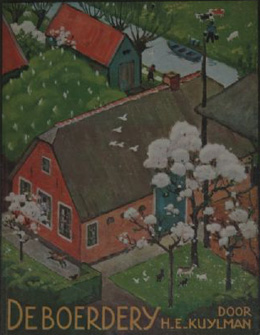
H.E. Kuylman.
De boerderij.
Zaandam: Verkade’s Fabrieken, 1936.
$24.00.
OCLC records only three copies in the U.S. Not ex-library, but heavily foxed. Worn along the edges but in good condition for a juvenile book from this period. In Dutch, the text provides a description of the fauna and flora of farms in the Netherlands. Excellent illustrations throughout, and a beautiful cover providing an aerial view of a typical farm.
N. V. Timofeeff-Resovskij (1900–1981), N. N. Vorontsov,and A. V. Yablokov.
Kratkij ocerk teorii evoljucii (An outline of evolutionary concepts).
Moskva: Akademija nauk SSSR, 1969.
$325.00.
Dust jacket worn at edges, not ex-library naturally. Signatures of all three authors on front free end paper (ffep), under a stamp reading “with the author’s compliments”. Yikes!
Theodosius Dobzhansky (1900–1975) reviewed Kratkij ocerk teorii evoljucii in 1970 in the pages of the Quarterly Review of Biology, stating clearly: “Genetics and evolutionary biology in Russia are rising from the ashes of the Stalin-Lysenko holocaust. The book under review is an excellent product of this renaissance. ... It is refreshing to have a modern Russian book on evolution which does not mention Lysenko”s name or his pseudo-science. At least among scientists, this nightmare has finally been shaken off. The molecular basis of evolution is taken for granted rather than ignored — there are at present several books in Russian dealing with this topic. The sacred triplet of letters, DNA (DHK in Russian), appears only three times, and the evolution of proteins has only two pages devoted to it. Mathematical aspects of evolutionary genetics are similarly short-circuited. This will probably cause the book to be dismissed in some circles as merely old-fashioned and not up-to-date. Yet those so dismissing it will lose an opportunity to learn much biology of which they are ignorant, and for an evolutionist to be ignorant in biology is even more unfortunate than to be ignorant of mathematics. Mathematical deductions in evolutionary theories are no more valid than the biological assumptions on which they rest. The authors critically review and then accept the basic tenets of what is called variously biological or synthetic theory of evolution, or the post-Neodarwinism. In fact, their summary statement of this theory (Chapter 9, pages 158–172) is a remarkable piece of rigorously argued and beautifully clear writing. ... All in all, this is a remarkable book, having no counterpart in the English language.”
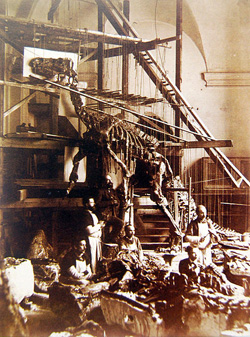
David Bruce Norman.
On the ornithischian dinosaur Iguanodon bernissartensis from the lower Cretaceous of Bernissart (Belgium).
Brussels, Belgium: Institut royal des Sciences naturelles de Belgique, 1980.
$100.00.
Institut royal des sciences naturelles de Belgique, Mémoires, number 178. Not ex-library. No trip to Brussels is complete without a visit to one of the largest dinosaur halls in the world, at the Museum of Natural Sciences. Where else can you see 30 Iguanodons on display?
Another lagniappe! In this case, William Edmonds’ The iguanodon mystery (Harmondsworth, England: Kestrel Books, 1979) at no extra charge. From the dust jacket: “This fascinating book traces the history of the discovery of iguanodons. It explains step by step how the evidence was built up and interpreted after the first find in 1822, and how much we still don’t know. The results is an unusual book that allows the reader to share in the exciting detective-work of tracking down a dinosaur.”
G. Evelyn Hutchinson (1903–1991).
The itinerant ivory tower: Scientific and literary essays.
New Haven, Conn.: Yale University Press,, 1953.
$750.00.
Hutchinson was the Sterling Professor of Zoology at Yale University, in recognition of his efforts as one of the architects of modern ecology. Proud of his lack of a Ph.D., Hutchinson’s reputation was ensured with his monumental magnum opus entitled Treatise on Limnology. The first volume in the Treatise, “Geography, Physics and Chemistry”, appeared in 1957. The itinerant ivory tower is Hutchinson’s second book. This copy features an inscription from the author in green ink on the ffep, to A.C. Crombie. Alistair Cameron Crombie (1915–1996) was Oxford’s first historian of science. Inscription reads “A.C. Crombie in gratitude and admiration from the author GEH. 6 May 1954”.

U.S. National Aeronautics and Space Administration (NASA).
Semiannual report to Congress.
Washington, D.C.: U.S. Government Printing Office, 1965–1970.
$1,200.00.
Mildly ex-library, in original wrappers. Eleven volumes altogether, including: Thirteenth semiannual report to Congress January 1–June 30, 1965 (264 pp.); Fourteenth semiannual report to Congress July 1–December 31, 1965 (269 pp.); Fifteenth semiannual report to Congress January 1–June 30, 1966 (243 pp.); Sixteenth semiannual report to Congress July 1–December 31, 1966 (274 pp.); Seventeenth semiannual report to Congress January 1–June 30, 1967 (262 pp.); Eighteenth semiannual report to Congress July 1–December 31, 1967 (243 pp.); Nineteenth semiannual report to Congress January 1–June 30, 1968 (238 pp.); Twentieth semiannual report to Congress July 1–December 31, 1968 (234 pp.); Twenty–first semiannual report to Congress January 1–June 30, 1969 (232 pp.); Twenty–second semiannual report to Congress July 1–December 31, 1969 (225 pp.; Apollo 11 and 12 described pp. 1–14 and elsewhere in report). An additional index volume included as well: Cumulative index to NASA semiannual reports to Congress October 1958 to December 1969 (245 pp.). Extremely scarce, an excellent yet succinct record of NASA’s accomplishments (Gemini and Apollo) and plans for the future (Shuttle).
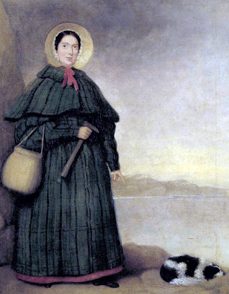
Everard Home (1756–1832).
“Some account of the fossil remains of an animal more nearly allied to fishes than any other classes of animals,”
Extracted from the Philosophical Transactions of the Royal Society, volume 104 (1 January), pp. 571–576.
London: Royal Society, 1814.
$3,800.00.
Beautifully bound, this paper is the first description of what eventually became known as an ichthyosaur. The fossil was initially discovered by glorious Mary Anning (1799–1847), the premier fossil collector in Dorset Jurassic exposures along the English Channel. Was Mary mentioned in this paper? You already know the answer to that question. 1814 is not all that different from 2016. On the discovery, Everard Home wrote: “This specimen was found upon an estate of Henry Host Henley, Esq. between Lyme and Charmouth, in Dorsetshire, in a cliff thirty of forty feet above the level of the sea-shore. It had been thrown down by the breaking off of a part of the cliff, and buried in the sand upon the shore, to a depth of nearly two feet. The skull was dug in 1812, the other parts in the following year, at a distance of some feet.” (p. 572).
A.P. Vinogradov (editor).
Kosmokhimiia Luny i planet: Sovetsko-amerikanskaia konferentsiia po kosmokhimii Luny i planet.
Moskva: Nauka, 1975.
$175.00.
Mons Vinogradov on the Moon is named in honor of geochemist Alexander Pavlovich Vinogradov (1895–1975), editor of this important work on the geochemistry of the Moon and planets, in light of American and Russian efforts. This Soviet-American conference took place in Moscow in June 1974, bringing together the most significant researchers to contemplate information gathered from a variety of sources, including Apollo samples. An English translation of these proceedings was eventually published by NASA in 1977.
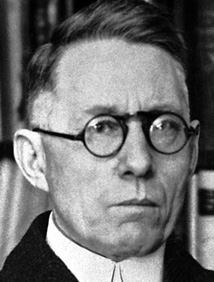
Johannes V. Jensen (1873–1950).
Mammut bogen.
Copenhagen: Gyldendalske Boghandel, 1933.
$1,450.00.
Extremely scarce collection of paleontological poetry for young readers in Danish, on all creatures extinct — from Archaeopteryx to mammoths to mosasaurs to pterodactyls. Wonderful lithographic illustrations throughout. The author was awarded the Nobel Prize in Literature in 1944, although probably not for this work. Not ex-library. OCLC records holdings of this incredible book in only four libraries in the U.S.
Robert Hutchison.
Meteorites: A petrologic, chemical and isotopic synthesis.
New York: Cambridge University Press, 2004.
$130.00.
Not ex-library.
Timothy D. Swindle reviewed this book in the pages of Meteoritics & Planetary Science in 2004: “The book’s strength is the seven chapters (out of 12 total) that primarily describe meteorites and their components. These comprise four chapters about chondrites (including one about chemistry and classification, one about components, and one each about carbonaceous and non-carbonaceous chondrites) and three about ‘differentiated meteorites’ (really everything non-chondritic, including primitive achondrites, ureilites, and lunar and Martian meteorites, as well as the obvious aubrites, HEDs, and irons). Can’t remember the difference between a winonaite and a brachinite or between a CR and a CH? Here’s the place to look it up. Although they are not always in prominent places, there are several useful tables and figures comparing the petrography, chemistry, and oxygen isotopes of the types.
Another of the book’s best features is that Hutchison typically cites the two or three best reviews about each topic introduced. Coupled with a 28 page bibliography, that makes this an excellent reference volume.”
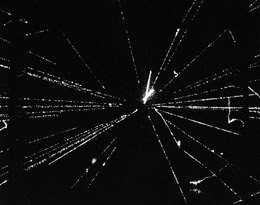
Leon M. Lederman and Chris Quigg (compilers).
Appraising the ring: Statements in support of the Superconducting Super Collider.
Washington, D.C.: Universities Research Association, 1988.
$34.50.
Not ex-library. Inscription in ink on inside front cover signed by Chris Quigg, dated September 16, 1988: “To Kate, with boundless admiration for the creative spirit and sensitive eye that made our first book together a joy to behold.” Includes statements in support of the SSC by Nobel Laureates (at the time of publication) J.W. Cronin, Val L. Fitch, Murray Gell-Mann, Sheldon L. Glashow, Glenn T. Seaborg, Emilio Serge, Samuel C.C. Ting, Charles H. Townes, Steven Weinberg, and C.N. Yang.
J.P. Kempton, R.C. Vaiden, D.R. Kolata, P.B. DuMontelle, M.M. Killey, and R.A. Bauer.
Geological-geotechnical studies for siting the Superconducting Super Collider in Illinois: Preliminary geological feasibility report.
Champaign, Ill.: Illinois State Geological Survey, 1985.
63 pp., Illinois State Geological Survey Environmental geology notes, number 111.
with:
J.P. Kempton, R.A. Bauer, B.B. Curry, W.G. Dixon, A.M. Graese, P.C. Reed, M.L. Sargent, and R.C. Vaiden.
Geological-geotechnical studies for siting the Superconducting Super Collider in Illinois: Results of the fall 1984 test drilling program.
Champaign, Ill.: Illinois State Geological Survey, 1987.
102 pp., Illinois State Geological Survey Environmental geology notes, number 117.
with:
J.P. Kempton, R.A. Bauer, B.B. Curry, W.G. Dixon, Jr., A.M. Graese, P.C. Reed, and R.C. Vaiden.
Geological-geotechnical studies for siting the Superconducting Super Collider in Illinois: Results of the spring 1985 test drilling program.
Champaign, Ill.: Illinois State Geological Survey, 1987.
88 pp., Illinois State Geological Survey Environmental geology notes, number 120.
with:
B.B. Curry, A.M. Graese, M.J. Hasek, R.C. Vaiden, R.A. Bauer, D.A. Schumacher, K.A. Norton, and W.G. Dixon, Jr.
Geological-geotechnical studies for siting the Superconducting Super Collider in Illinois: Results of the 1986 test drilling program.
Champaign, Ill.: Illinois State Geological Survey, 1988.
108 pp., Illinois State Geological Survey Environmental geology notes, number 122.
with:
A.M. Graese, R.A. Bauer, B.B. Curry, R.C. Vaiden, W.G. Dixon, Jr., and J.P. Kempton.
Geological-geotechnical studies for siting the Superconducting Super Collider in Illinois: Regional summary.
Champaign, Ill.: Illinois State Geological Survey, 1988.
100 pp., Illinois State Geological Survey Environmental geology notes, number 123.
with:
R.C. Vaiden, M.J. Hasek, C.R. Gendron, B.B. Curry, A.M. Graese, and R.A. Bauer.
Geological-geotechnical studies for siting the Superconducting Super Collider in Illinois: Results of drilling large-diameter test holes in 1986.
Champaign, Ill.: Illinois State Geological Survey, 1988.
58 pp., Illinois State Geological Survey Environmental geology notes, number 124.
with:
L.M. Curran, S.B. Bhagwat, and C.A. Hindman.
Disposal alternatives for material to be excavated from the proposed site of the Superconducting Super Collider in Illinois.
Champaign, Ill.: Illinois State Geological Survey, 1988.
17 pp., Illinois State Geological Survey Environmental geology notes, number 125.
with:
I.G. Krapac, W.R. Roy, R.A. Griffin, and T. Beissel.
Potential impact of material to be excavated from the Illinois SSC tunnel on surface water and groundwater resources.
Champaign, Ill.: Illinois State Geological Survey, 1988.
19 pp., Illinois State Geological Survey Environmental geology notes, number 126.
with:
R.H. Gilkeson, R.A. Cahill, and C.R. Gendron.
Natural background radiation in the proposed Illinois SSC siting area.
Champaign, Ill.: Illinois State Geological Survey, 1988.
47 pp., Illinois State Geological Survey Environmental geology notes, number 127.
$125.00.
All not ex-library, in mint condition. Altogether nine reports completed by the Illinois State Geological Survey on the proposed location for the Superconducting Super Collider in northern Illinois. The SSC in Illinois might have saved hundreds of millions in construction costs, especially with the recycling of the Fermilab Tevatron into the SSC facility. Twenty times more powerful than CERN’s Large Hadron Collider, we can only guess what the SSC in Illinois would have discovered.

First Monday
Volume 1 (1996)
Copenhagen: Munksgaard, 1997.
$25.00.
The first physical manifestation of the peer-review, Internet-only scholarly journal, containing the contents of the first six issues, released between May 6 and December 2, 1998. First Monday continues, after 20 years, as one of the leading journals dedicated to research about the Internet; see http://firstmonday.org. The contents of this CD can be read by any computer with a CD disc drive and a Web browser (all of the content in html). Very suitable also as a coaster for your cup of coffee or glass of wine in order to avoid nasty rings on your stylish furniture (Danish, I assume). A collector’s item, a precious cyber-remnant dating from long, long ago, the Paleoproterozoic of the Internet and the Archean of the Web. Included, another lagniappe: the only known First Monday bumper sticker, elevating you and your automobile (or other ride of choice) into la fine fleur intellectuelle.
Richard Goldschmidt (1878–1958).
The material basis of evolution.
New Haven, Conn.: Yale University Press, 1982.
$75.00.
Not ex-library. “The uses of hersey” — introduction by Stephen Jay Gould (1941–2002), pp. xiii–xlii.
Brian Charlesworth reviewed this re-issue of The material basis of evolution in Paleobiology in 1982: “The material basis of evolution, originally published in 1940, is Goldschmidt’s attempt to interpret the evidence from genetics, taxonomy, and comparative zoology in the light of these concepts. It contrasts vividly with roughly contemporary works which are now regarded as cornerstones of the modern evolutionary synthesis: Fisher (1930), Wright (1931), Haldane (1932), Dobzhansky (1937), Huxley (1940, 1942), Mayr (1942), Simpson (1944). In view of current claims that macroevolution may involve different causal processes from microevolution (Gould, 1980), it is extremely useful to have available this reprint of Goldschmidt’s book, which is one of the most coherent arguments against neo–Darwinism ever written.”

Charles McDermand.
Waters of the golden trout country.
New York: G.P. Putnam’s Sons, 1946.
$200.00.
Signed by the author on the title page, scarce. Not ex-library. A wonderful description of the High Sierra decades ago, beautifully written and illustrated by photographs.
“A fly-fisherman’s paradise would be a land of snow-fed lakes and streams inhabited by many breeds of unsophisticated trout, where there is enough brush to shade the water and yet not enough to tangle a back cast, and where competition is nil. There is such a place, more than two hundred miles in length, extending south from Yosemite Park through the San Joaquin watershed, the Kings Canyon National Park, and Sequoia National Park. A map of that High Sierra country shows a chain of lakes forming the timber-line source of many rivers: the Tuolumne, the San Joaquin, the many forks of the Kings, and the Kern. Dwelling of those uncounted miles of water are trout simply dying of old age because of a lack of fishermen.” — p. xi.
“Thanks to the grim loneliness and high altitude of the surrounding timber-line passes, the upper Kern is relatively untouched by man. Northward, its headwaters spring from the formidable barriers of the Kings-Kern Divide. The 14,000-foot peaks of the main Sierra crest guard it from the east. Impassable gorges forbid access from the south. And the upthrust of the Great Western Divide bars the teeming highways coming from the west. Only on foot or by pack train may you visit the upper Kern, but well-marked trails enter the canyon from all directions except the south. The Kern is monarch of all Sierra streams and is the original habitat of the fighting trout, Salmo gilberti.” — p. 115.
Last corrected 3 November 2016. | © 2016 Greenwood Road Books. All rights reserved. | Questions? Send e–mail to books [at] greenwoodroadbooks [dot] com |